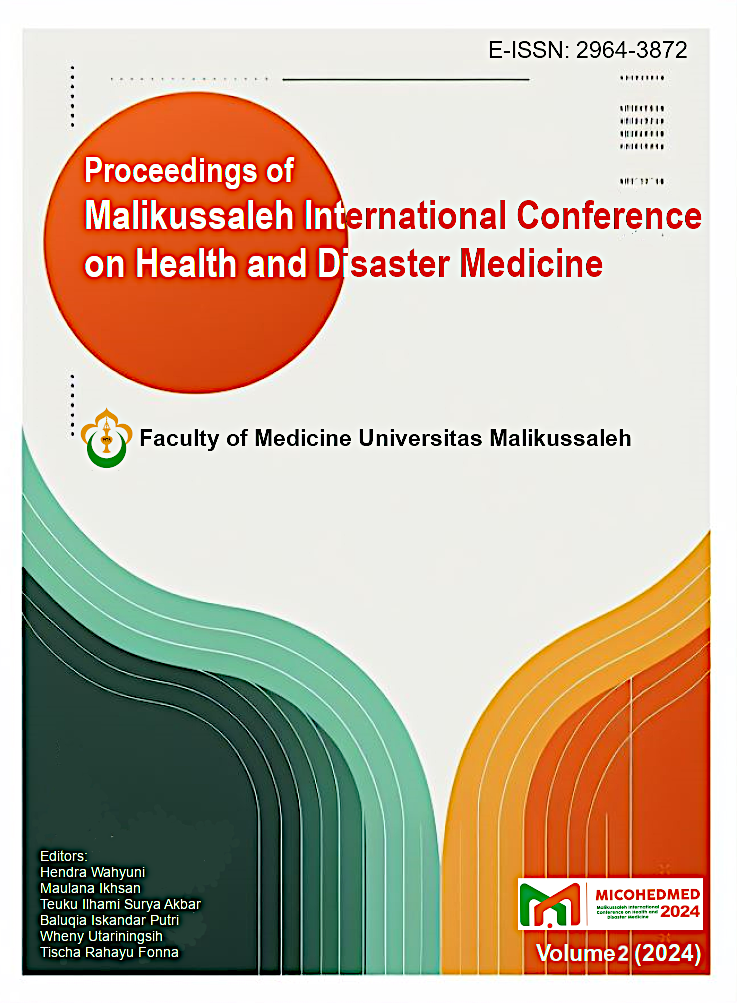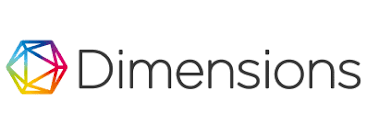Overview of the Implementation of the Disaster Preparedness School Program at the Sukma Bangsa Lhokseumawe School
Keywords:
Disaster, Preparedness, School programAbstract
The increasing incidence of natural disasters caused by global warming and climate change has given rise to a greater need for disaster preparedness. One important aspect of this preparedness is the protection of children and their education, especially in the school environment. Education has an important role in equipping students with the knowledge and skills to face emergency disaster situations. Schools, as educational and community centers, have a central role in preparing children to face the threat of disaster. Therefore, the Disaster Preparedness School Program (SSB) is a relevant solution to mitigate disaster risks and protect children and their education. A disaster safe school/madrasah is a school/madrasah that implements standard facilities and infrastructure as well as a culture that is able to protect the school community and the surrounding environment from the dangers of disasters. The SSB program has spread widely in Indonesia, but its implementation still raises several problems that require further research. This research problem includes factors that influence its implementation, challenges in implementation and the impact of implementing this program on school residents. The aim of this research is to describe the implementation of the SSB Program at the Sukma Bangsa Lhokseumawe School which focuses on problems that require analysis of the factors that influence them. The population of this research is all Sukma Bangsa Lhokseumawe school officials, namely students, school principals, teacher councils, education staff and school committees with a total population of 800 people, a sample of 270 respondents. The data collection technique uses a questionnaire with 15 statements measured using a Likert scale. Based on the univariate test, the results show that the implementation of the Disaster Preparedness School Program is still very low 96 respondents were less exposed to the implementation of the SSB program in schools, only 90 were in the good category. Analysis using Multiple regression shows that there is a significant relationship between the respondent categories and their perceptions of the implementation of the SSB program, the R obtained in data processing is 0.620. And according to statistical calculations based on these figures, the influence of the independent variable on the dependent variable is 62%. The conclusion of this research shows that further outreach regarding the SSB program in the school environment is still needed. improve the implementation of this program and assist the government and related organizations in developing more effective strategies in implementing disaster preparedness school programs.
References
1. BNPB. "Potensi Bencana di Indonesia" . Jakarta. : https://bnpb.go.id. [Accessed: 05-Sep-2024]., 2022.
2. UNESCO. "The Role of Education in Disaster Risk Reduction," . Jakarta : https://unesco.org, 2021.
3. Kemdikbud. "Pedoman Pelaksanaan Program Sekolah Siaga Bencana,". Jakarta : Kementerian Pendidikan dan Kebudayaan,, 2020.
4. "Evaluasi Program Sekolah Siaga Bencana di Indonesia," . A. Setiawan. Jakarta : Jurnal Pendidikan, vol. 12, no. 2, pp. 100-112., 2023, Vols. Volume 12 No 2, pp. 100-112.
5. "Faktor-faktor yang Mempengaruhi Kesiapsiagaan Bencana di Sekolah" . R. Hidayat. Jakarta : Jurnal Kebencanaan,, 2022, Vols. volume. 5, no. 1, pp. 55-67, 2022.
6. "Peran Kolaborasi dalam Pelaksanaan Sekolah Siaga Bencana,". Darmawan, S. s.l. : Jurnal Manajemen Bencana., 2021, Vols. vol. 10, no. 3, pp. 210-222.
7. Dapodik. Data Sekolah Sukma Bangsa. Lhokseumawe : Sekolah Sukama Bangsa Lhokseumawe, 2024.
8. Sugiyono. Metode Penelitian Pendidikan: Pendekatan Kuantitatif, Kualitatif, Research & Development. Bandung : Alfabeta, 2018.
9. Ismail, Syamsul. Metodologi Penelitian Kuantitatif: Aplikasi dalam Pendidikan. Surabaya : Universitas Negeri Surabaya Press, 2018.
10. Nurfalaq, M.F., Zuhroh, Q., Indriasari, T., Kusuma, H. Implementasi Program Sekolah Siaga Bencana dalam Meningkatkan Kesiapsiagaan Siswa Menghadapi Bencana Longsor. Jurnal Gervasi, 2023. Tersedia di: https://journal.ikippgriptk.ac.id/index.php/gervasi/article/download/5575/2350/15736
11. Prakoso, A., Tyas, E.H., Pramajati, A. Implementasi Program Sekolah Aman Bencana di Sekolah Dasar. Jurnal Ilmu Pendidikan Sosial Indonesia, 2020. Tersedia di: https://journal.uny.ac.id/index.php/jipsindo/article/download/34936/14381
12. Syukran, M. Pengaruh Tingkat Pengetahuan terhadap Kesiapsiagaan Bencana pada Siswa. Skripsi, 2021. Tersedia di: https://repositori.widyagamahusada.ac.id/id/eprint/360/1/SKRIPSI-Syukran-181213251352.pdf
13. Setyaningrum, N., Muna, R. Pengaruh Pendidikan Bencana terhadap Tingkat Pengetahuan Siswa tentang Kesiapsiagaan Bencana Gempa Bumi dan Tsunami di SDN Jigudan Pandak Bantul Yogyakarta. Jurnal Pendidikan, 2020, hlm. 22–29. Tersedia di: https://jurnal.globalhealthsciencegroup.com/index.php/JPM/article/view/2329
14. Sakurai, A., Sato, T., Murayama, Y. Impact Evaluation of a School-Based Disaster Education Program in a City Affected by the 2011 Great East Japan Earthquake and Tsunami Disaster. International Journal of Disaster Risk Reduction, 2020, vol. 47, 101632. DOI: 10.1016/j.ijdrr.2020.101632
15. Indriasari, T., Kusuma, H. Pendidikan Kebencanaan dan Peran Komunitas Sekolah dalam Mitigasi Bencana Longsor. Jurnal Pendidikan, 2020. Tersedia di: https://journal.ikippgriptk.ac.id/index.php/gervasi/article/download/5575/2350/15736
16. Pramajati, A., Tyas, E.H., Prakoso, A. Implementasi Program Sekolah Aman Bencana di Sekolah Dasar. Jurnal Ilmu Pendidikan Sosial Indonesia, 2020. Tersedia di: https://journal.uny.ac.id/index.php/jipsindo/article/download/34936/14381
17. Pahleviannur, M.R. Meningkatkan Pemahaman tentang Bencana Sejak Usia Dini guna Mengurangi Risiko. Jurnal Pendidikan Anak Usia Dini, 2019. Tersedia di: https://ejournal.unesa.ac.id/index.php/paud-teratai/article/view/31812
18. Juhadi, I., et al. Implementasi Mitigasi Bencana di Sekolah sebagai Strategi Pengurangan Risiko. Jurnal Pendidikan dan Kebudayaan, 2021. Tersedia di: https://jurnaldikbud.kemdikbud.go.id/index.php/jpnk/article/view/1234
19. Beatrix, V. Kesiapsiagaan Siswa dalam Menghadapi Bencana melalui Pendidikan Mitigasi di Sekolah. Jurnal Pendidikan, 2020. Tersedia di: https://ejournal.undip.ac.id/index.php/educate/article/view/31456
20. Tyas, E.H., Pramajati, A., Prakoso, A. Program Sekolah Siaga Bencana sebagai Upaya Mitigasi di Sekolah Dasar. Jurnal Pendidikan, 2020. Tersedia di: https://journal.ikippgriptk.ac.id/index.php/gervasi/article/download/5575/2350/15736
21. Zuhroh, Q., Nurfalaq, M.F., Indriasari, T. Peningkatan Kesiapsiagaan Siswa melalui Program Sekolah Siaga Bencana. Jurnal Gervasi, 2023. Tersedia di: https://journal.ikippgriptk.ac.id/index.php/gervasi/article/download/5575/2350/15736
22. Pramajati, A., Tyas, E.H., Prakoso, A. Implementasi Program Sekolah Aman Bencana di Sekolah Dasar. Jurnal Ilmu Pendidikan Sosial Indonesia, 2020. Tersedia di: https://journal.uny.ac.id/index.php/jipsindo/article/download/34936/14381
23. Indriasari, T., Kusuma, H. Pendidikan Kebencanaan dan Peran Komunitas Sekolah dalam Mitigasi Bencana Longsor. Jurnal Pendidikan, 2020. Tersedia di: https://journal.ikippgriptk.ac.id/index.php/gervasi/article/download/5575/2350/15736
Downloads
Published
How to Cite
Issue
Section
License
Copyright (c) 2024 Yusrawati, Mawar Hayati, Fitriana Dewi

This work is licensed under a Creative Commons Attribution-ShareAlike 4.0 International License.
n order for Proceedings of Malikussaleh International Conference on Health and Disaster Medicine (MICOHEDMED) to publish and disseminate research articles, we need non-exclusive publishing rights (transfered from author(s) to publisher). This is determined by a publishing agreement between the Author(s) and Proceedings of Malikussaleh International Conference on Health and Disaster Medicine (MICOHEDMED). This agreement deals with the transfer or license of the copyright of publishing to Proceedings of Malikussaleh International Conference on Health and Disaster Medicine (MICOHEDMED), while Authors still retain significant rights to use and share their own published articles. Proceedings of Malikussaleh International Conference on Health and Disaster Medicine (MICOHEDMED) supports the need for authors to share, disseminate and maximize the impact of their research and these rights, in any databases.
As a proceeding Author, you have rights for a large range of uses of your article, including use by your employing institute or company. These Author rights can be exercised without the need to obtain specific permission. Authors publishing in Proceedings of Malikussaleh International Conference on Health and Disaster Medicine (MICOHEDMED) proceedings have wide rights to use their works for teaching and scholarly purposes without needing to seek permission, including:
- use for classroom teaching by Author or Author's institution and presentation at a meeting or conference and distributing copies to attendees;
- use for internal training by author's company;
- distribution to colleagues for their reseearch use;
- use in a subsequent compilation of the author's works;
- inclusion in a thesis or dissertation;
- reuse of portions or extracts from the article in other works (with full acknowledgement of final article);
- preparation of derivative works (other than commercial purposes) (with full acknowledgement of final article);
- voluntary posting on open web sites operated by author or author’s institution for scholarly purposes,
(but it should follow the open access license of Creative Common CC-by-SA License).
Authors/Readers/Third Parties can read, print and download, redistribute or republish the article (e.g. display in a repository), translate the article, download for text and data mining purposes, reuse portions or extracts from the article in other works, sell or re-use for commercial purposes, remix, transform, or build upon the material, they must distribute their contributions under the same license as the original Creative Commons Attribution-ShareAlike (CC BY-SA).




